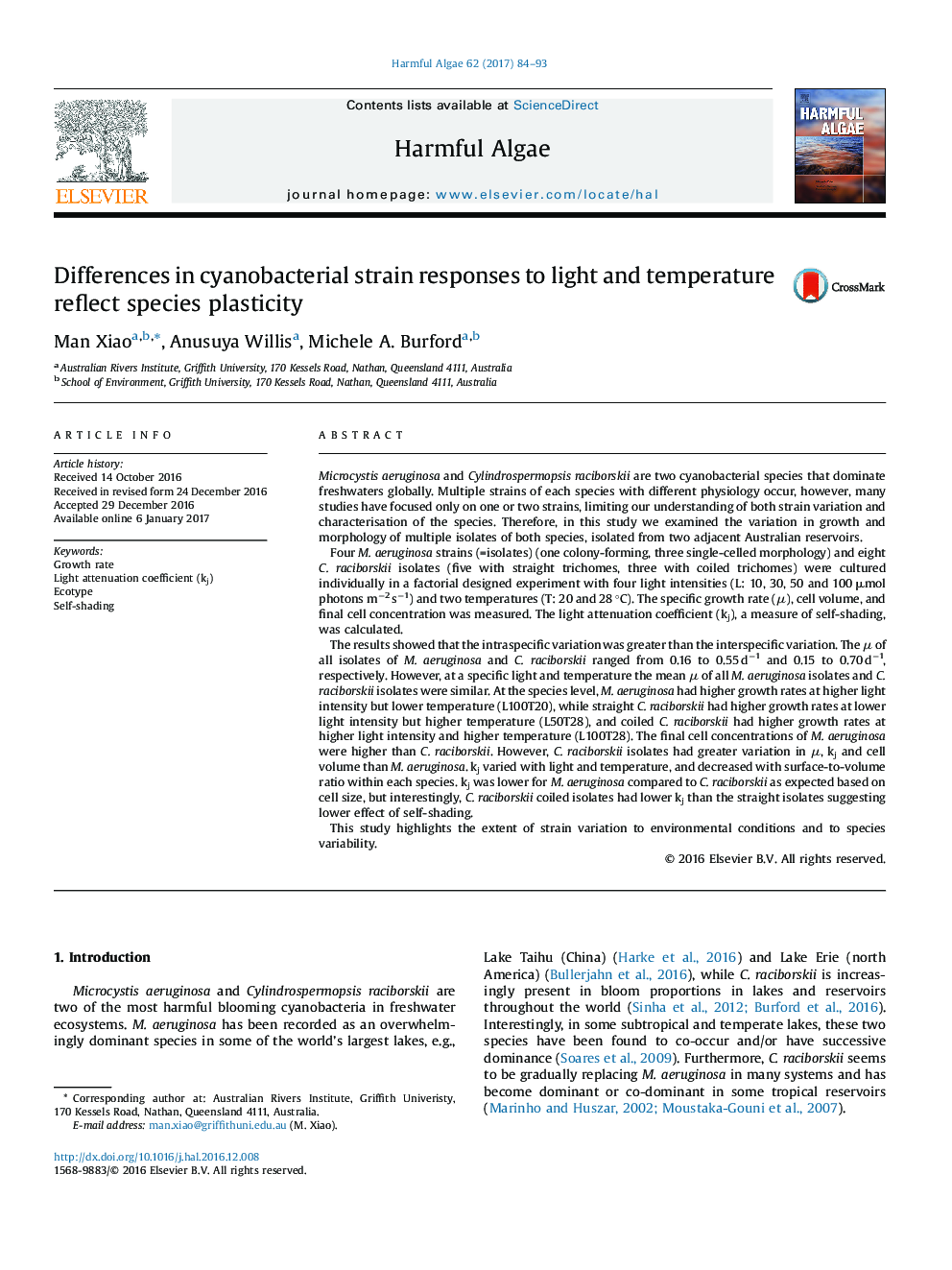| کد مقاله | کد نشریه | سال انتشار | مقاله انگلیسی | نسخه تمام متن |
|---|---|---|---|---|
| 5765700 | 1626910 | 2017 | 10 صفحه PDF | دانلود رایگان |
Microcystis aeruginosa and Cylindrospermopsis raciborskii are two cyanobacterial species that dominate freshwaters globally. Multiple strains of each species with different physiology occur, however, many studies have focused only on one or two strains, limiting our understanding of both strain variation and characterisation of the species. Therefore, in this study we examined the variation in growth and morphology of multiple isolates of both species, isolated from two adjacent Australian reservoirs.Four M. aeruginosa strains (=isolates) (one colony-forming, three single-celled morphology) and eight C. raciborskii isolates (five with straight trichomes, three with coiled trichomes) were cultured individually in a factorial designed experiment with four light intensities (L: 10, 30, 50 and 100 μmol photons mâ2 sâ1) and two temperatures (T: 20 and 28 °C). The specific growth rate (μ), cell volume, and final cell concentration was measured. The light attenuation coefficient (kj), a measure of self-shading, was calculated.The results showed that the intraspecific variation was greater than the interspecific variation. The μ of all isolates of M. aeruginosa and C. raciborskii ranged from 0.16 to 0.55 dâ1 and 0.15 to 0.70 dâ1, respectively. However, at a specific light and temperature the mean μ of all M. aeruginosa isolates and C. raciborskii isolates were similar. At the species level, M. aeruginosa had higher growth rates at higher light intensity but lower temperature (L100T20), while straight C. raciborskii had higher growth rates at lower light intensity but higher temperature (L50T28), and coiled C. raciborskii had higher growth rates at higher light intensity and higher temperature (L100T28). The final cell concentrations of M. aeruginosa were higher than C. raciborskii. However, C. raciborskii isolates had greater variation in μ, kj and cell volume than M. aeruginosa. kj varied with light and temperature, and decreased with surface-to-volume ratio within each species. kj was lower for M. aeruginosa compared to C. raciborskii as expected based on cell size, but interestingly, C. raciborskii coiled isolates had lower kj than the straight isolates suggesting lower effect of self-shading.This study highlights the extent of strain variation to environmental conditions and to species variability.
Journal: Harmful Algae - Volume 62, February 2017, Pages 84-93
